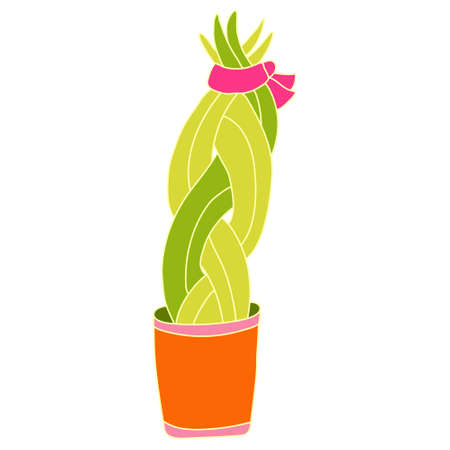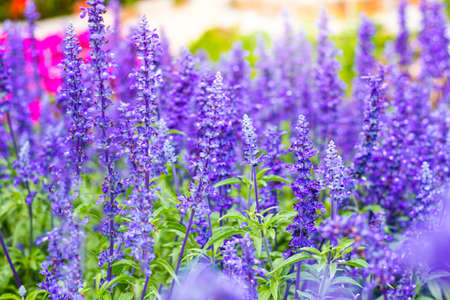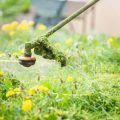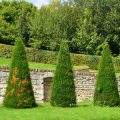Introduction to British Plant Rewilding
Rewilding your garden with native British plants is more than just a gardening trend—its a thoughtful way to restore the natural balance of our local landscapes. Across the UK, interest in garden rewilding has blossomed as people recognise the importance of nurturing biodiversity close to home. By choosing plants that have deep roots in our countryside, you’re not only helping to recreate lost habitats but also supporting native wildlife, from bees and butterflies to birds and hedgehogs. Unlike exotic species, which can sometimes disrupt local ecosystems, British native plants are perfectly adapted to our soils and climate, making them resilient choices that require less fuss and maintenance. As we look to heal nature’s delicate web in our own back gardens, understanding why these plants matter—and how they fit into the bigger picture of conservation—lays the groundwork for successful rewilding projects across the country.
Familiar Native Wildflowers for Your Garden
When it comes to rewilding your British garden, few things evoke the nostalgic charm of the countryside quite like our native wildflowers. These cherished plants not only support local wildlife but also bring a sense of history and tradition to any outdoor space. Here’s an overview of some beloved species—foxgloves, bluebells, and cowslips—and practical advice on how to incorporate them into your garden for that quintessential cottage-garden feel.
Classic British Wildflowers
| Wildflower | Preferred Location | Bloom Time | Key Features |
|---|---|---|---|
| Foxglove (Digitalis purpurea) | Partial shade, woodland edges | Late spring to summer | Tall spires, loved by bees, iconic in cottage gardens |
| Bluebell (Hyacinthoides non-scripta) | Dappled shade, beneath trees or hedgerows | Spring | Cobalt-blue carpets, delicate scent, supports pollinators |
| Cowslip (Primula veris) | Open meadows, sunny banks | Early to mid-spring | Nodding yellow blooms, important for early bees |
Planting Tips for Cottage-Garden Charm
- Soil Preparation: Most native wildflowers prefer well-drained soil. Before planting, clear the area of persistent weeds and gently rake the soil surface.
- Sowing & Planting: Sow seeds directly in autumn or early spring. For plug plants or bulbs (such as bluebells), plant at the recommended depth and spacing.
- Companion Planting: Mix wildflowers with traditional cottage-garden favourites such as primroses or campions for a naturalistic effect.
- Maintenance: Once established, wildflowers are generally low-maintenance. Allow seed heads to ripen before cutting back to encourage self-seeding and spread.
- Biodiversity Boost: By choosing native species, you’ll attract bees, butterflies, and other vital pollinators—helping to restore the balance of your local ecosystem.
A Note from Experience
If there’s one thing I’ve learnt over the years, it’s that patience is key when establishing wildflowers. Give them time to settle in, resist the urge to tidy too soon, and you’ll be rewarded with a vibrant tapestry season after season—a true slice of British countryside right outside your door.

3. Essential British Grasses and Ground Cover
When it comes to rewilding your garden with a true British touch, the humble grasses and ground covers are the unsung heroes. These tough, native species not only provide the lush backdrop of natural meadows but also lay the foundation for thriving wildlife habitats right outside your door.
Yorkshire Fog: The Resilient Meadow Staple
One of the classic sights across Britain’s wild spaces is the softly tufted blades of Yorkshire fog (Holcus lanatus). This grass is especially valued in rewilding schemes because it’s hardy, adaptable, and forms dense swards even in less-than-ideal soils. Its gentle silvery hue and fluffy seed heads bring an authentic meadow feel to any patch, while offering shelter and food for countless insects and birds—especially vital for fledglings finding their wings in early summer.
Creeping Buttercup: Cheerful and Wildlife-Friendly
No list of native ground covers would be complete without the familiar creeping buttercup (Ranunculus repens). While some might call it a weed, seasoned gardeners know that its golden flowers add cheerful colour from spring through autumn, weaving between grasses and providing nectar for pollinators when little else is in bloom. Its spreading habit helps suppress unwanted invaders too, keeping your rewilded areas looking natural yet cared for.
The Quiet Strength of Native Grasses
Other stalwarts worth mentioning include red fescue (Festuca rubra)—a favourite for its fine texture and ability to thrive in shade—and sweet vernal grass (Anthoxanthum odoratum), whose subtle scent marks the arrival of summer. These grasses intermingle beautifully with wildflowers, creating a tapestry that changes with the seasons and never looks forced or artificial.
Ground Cover as a Wildlife Haven
Beneath these grasses, native ground covers like self-heal (Prunella vulgaris) and bugle (Ajuga reptans) do their quiet work. They form a living carpet that supports bees, butterflies, and beetles alike. By choosing these robust natives over more ornamental or exotic options, you’re not just gardening; you’re helping restore the balance of nature—a principle at the very heart of successful British rewilding.
So if you’re keen to give your corner of Britain back to nature, start from the ground up. Embrace these resilient native grasses and ground covers; they’ll reward you—and local wildlife—for generations to come.
4. Shrubs and Hedges Rooted in Tradition
When you think of a classic British countryside, it’s hard to imagine it without the time-honoured silhouettes of native shrubs and hedges lining fields and gardens. These robust plants are not just pleasing to the eye—they’re living tapestries steeped in centuries of tradition, supporting wildlife and offering practical uses that go far beyond mere decoration. If you’re serious about rewilding your garden, integrating native shrubs such as hawthorn (Crataegus monogyna) and dog rose (Rosa canina) is a must.
The Heritage of Hawthorn and Dog Rose
Hawthorn has long been cherished in Britain, often used to create boundary hedges thanks to its dense growth and thorny branches—a natural deterrent for livestock. In folklore, hawthorn is associated with May Day celebrations and was believed to ward off evil spirits. Dog rose, meanwhile, offers delicate pink blooms in early summer followed by vibrant red hips in autumn, which have traditionally been used for making vitamin-rich syrups and jellies.
Wildlife Value
Both hawthorn and dog rose play pivotal roles in supporting local biodiversity. Their flowers provide nectar for pollinators such as bees and butterflies, while their dense structure offers nesting sites for birds. The berries (hips) that follow are a vital winter food source for birds like thrushes and blackbirds.
| Shrub/Hedge | Traditional Uses | Wildlife Supported |
|---|---|---|
| Hawthorn | Boundary hedging; wood for tool handles; May Day garlands | Bees, butterflies, birds (nesting & berries) |
| Dog Rose | Syrups, jellies; ornamental hedging | Pollinators, birds (rose hips) |
How to Incorporate Native Shrubs and Hedges
- Select a Sunny Spot: Most native shrubs thrive best in full sun or partial shade. Choose a location along borders or as stand-alone features.
- Plant as Mixed Hedges: For an authentic look and greater wildlife benefit, combine several species such as hawthorn, blackthorn, hazel, and dog rose.
- Allow Natural Growth: Avoid over-pruning—let your hedge grow a little wilder to offer more shelter and food for wildlife.
A Gardener’s Note
If you’re after a bit of that old-fashioned British charm—and perhaps want to pass on something meaningful to the next generation—there’s nothing quite like planting a mixed native hedge. It weaves together beauty, tradition, and nature’s resilience into one living boundary.
5. Trees That Shape the British Landscape
When we talk about rewilding our gardens with native British plants, trees are undoubtedly the backbone of any thriving landscape. Not only do they provide shelter and food for countless species, but their presence lends that unmistakable sense of continuity and heritage to a garden—something we Brits hold close to our hearts. Allow me to take you through some timeless native trees, along with a few pearls of old-fashioned gardening wisdom for planting and caring for these magnificent staples.
Oak: The Mighty Veteran
The English oak (Quercus robur) is quite simply the monarch of the British countryside. These grand trees support more wildlife than any other native tree, serving as home to birds, insects, and mammals alike. If you’ve got space, plant your oak where it can spread its branches freely—future generations will thank you. Remember, patience is key; oaks grow slowly but live for centuries. When planting, dig a generous hole, enrich it with well-rotted manure or leaf mould, and water thoroughly in dry spells during its first few years.
Birch: The Elegant Pioneer
Silver birch (Betula pendula) brings a touch of grace to any garden with its shimmering bark and delicate leaves. It’s often the first tree to colonise open ground, making it perfect for kick-starting your rewilding efforts. Birches prefer well-drained soils and open positions with plenty of light. An old tip from seasoned gardeners: mulching around the base each spring keeps weeds at bay and conserves moisture—a must for young saplings getting established.
Rowan: The Enchanting Protector
Also known as mountain ash (Sorbus aucuparia), rowan is steeped in British folklore as a tree of protection and good luck. Its clusters of creamy blossoms in spring and brilliant red berries in autumn make it a favourite with both humans and hungry thrushes. Rowan thrives even in poor soils and exposed sites—just be sure to avoid waterlogged ground. Plant with a handful of bone meal for strong roots, and prune lightly after flowering to maintain its tidy shape.
A Few More Native Gems
If space allows, consider adding hawthorn, hazel, or wild cherry—all time-honoured choices that bring character and biodiversity to your plot.
Time-Tested Tips for Tree Success
1. Always stake young trees securely but allow some movement for stronger trunks.
2. Water regularly during dry weather in their first two years.
3. Mulch annually with organic matter.
4. Watch out for competing grass or weeds around the base.
Welcoming these native giants into your garden isn’t just about aesthetics—it’s an investment in wildlife, tradition, and the living tapestry of Britain’s natural heritage.
6. Creating a Wildlife Haven: Practical Rewilding Tips
If you’re keen to breathe new life into your garden with native British plants, the real magic begins when you create inviting spaces for wildlife to thrive. Over the years, I’ve found that it’s the simple, thoughtful touches that attract birds, bees, and butterflies year after year—turning an ordinary plot into a buzzing, fluttering sanctuary.
Embrace Messy Corners and Wild Borders
Don’t be too quick to tidy every inch of your garden. Leaving a patch of nettles or long grass in a quiet corner provides essential shelter and food for insects, which in turn feed hedgehogs and birds. Native wildflowers like oxeye daisy and red campion along borders offer pollen-rich pit stops for pollinators.
Build Log Piles for Hidden Guests
A humble log pile tucked away beneath a hedge or behind a shed creates a perfect home for beetles, woodlice, and even frogs. Choose untreated logs from native trees such as oak or hazel, stacking them loosely so creatures can wiggle in and out. Over time, these piles become natural bug hotels and vital winter refuges.
Add a Pond—No Matter the Size
You don’t need acres of space for a pond; even an old washing-up bowl sunk into the ground will do. Fill it with rainwater if you can, add some native aquatic plants like water mint or marsh marigold, and leave stones or branches at the edge for easy access. Frogs, dragonflies, and thirsty songbirds will soon make themselves at home.
Let Leaves Lie and Go Easy on Chemicals
Instead of raking up every last leaf come autumn, let them gather under shrubs or on beds. Rotting leaves provide shelter for insects and help enrich your soil naturally. Avoid pesticides and herbicides—these can undo all your hard work by harming beneficial wildlife drawn to your rewilded garden.
Patience Pays Off
The most important lesson I’ve learned is to give nature time. Some years are busier than others, but with patience and care, those first few goldfinches or brimstone butterflies signal that your efforts are paying off. Keep planting those native species, stay curious, and enjoy watching your own little slice of Britain’s wild beauty flourish.
7. Resources and Next Steps for Rewilders
Embarking on your British garden rewilding journey is a rewarding process, but it’s natural to feel a bit daunted at first. Thankfully, you’re not alone—there are plenty of resources and communities ready to support you every step of the way. Here’s where to turn when you need a helping hand or a bit of sage advice.
Trusted Native Plant Nurseries
Choosing the right plants is half the battle, and sourcing them from reputable native nurseries ensures your efforts genuinely benefit local wildlife and ecosystems. Look out for organisations such as British Wildflower Plants, Landlife Wildflowers, or your local Royal Horticultural Society (RHS) recommended suppliers. These nurseries specialise in British-grown species and can offer guidance tailored to your region’s soil and climate.
Get Involved: Local Conservation Groups
There’s nothing quite like learning from those who’ve walked this path before. Reach out to conservation groups such as The Wildlife Trusts, The Woodland Trust, or your nearest Friends of the Earth branch. Many run workshops, seed swaps, and volunteering opportunities that offer hands-on experience and invaluable local knowledge.
Further Reading and Guides
If you’d rather start by curling up with a good book or browsing online resources, several guides can provide inspiration and practical tips. Titles like “Wild Your Garden” by The Wildlife Trusts or “The RHS Companion to Wildlife Gardening” are packed with wisdom from seasoned rewilders. Online, the Bumblebee Conservation Trust and Plantlife UK both offer downloadable guides specific to British habitats.
Your Rewilding Community Awaits
Remember, rewilding isn’t just about plants—it’s about fostering connections with nature and your neighbours alike. Share your progress on social media using hashtags like #rewildBritain, join local gardening forums, or pop along to a community meeting. Every small step contributes to a larger movement, so take pride in your patch and know that help is always at hand as you nurture your own slice of wild Britain.


